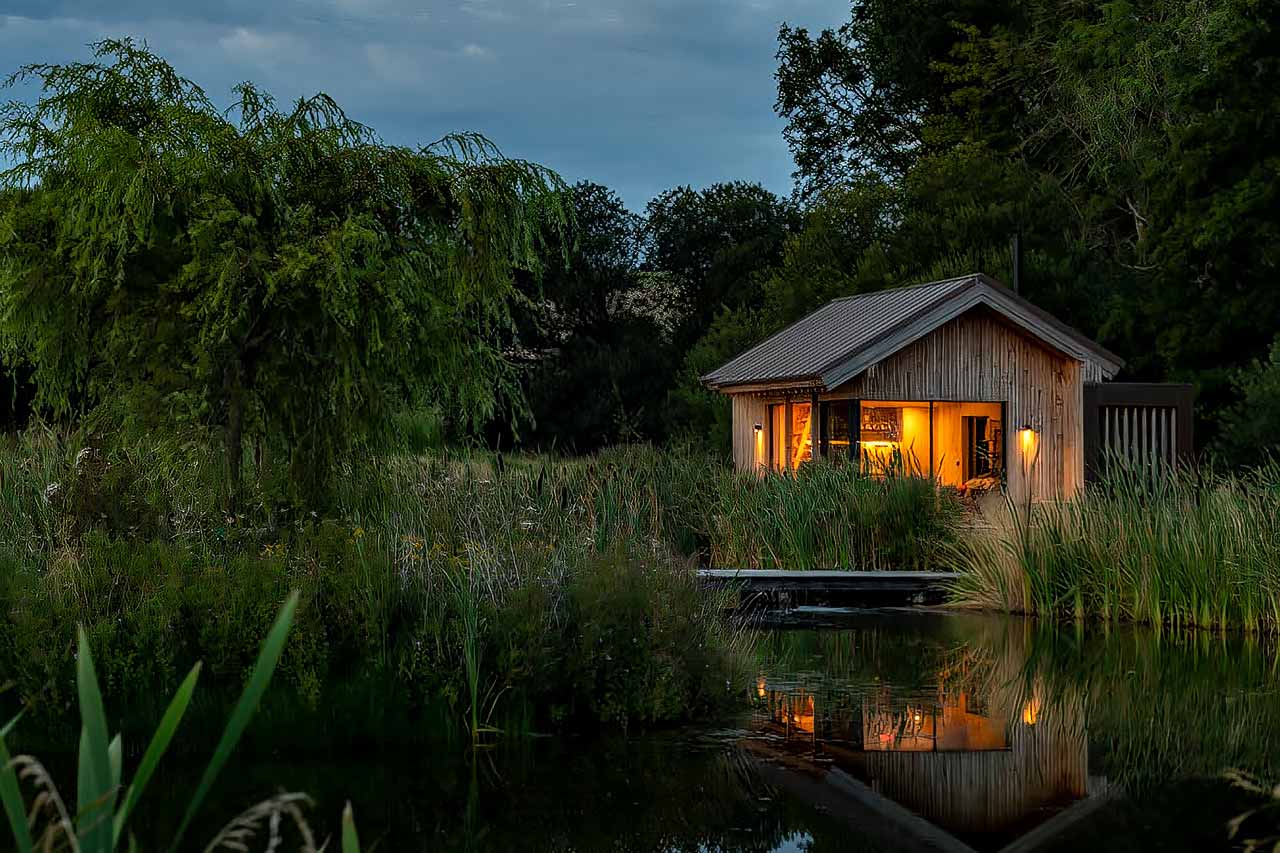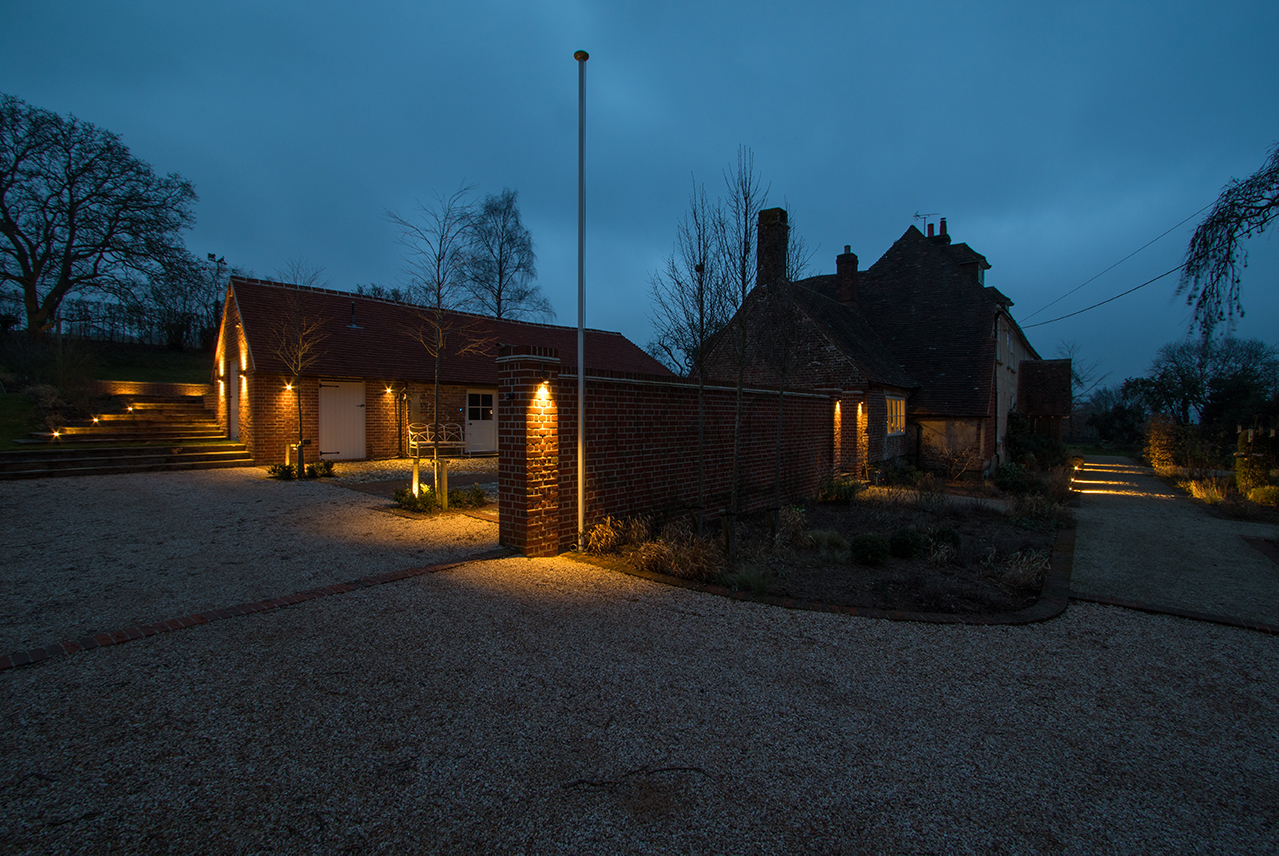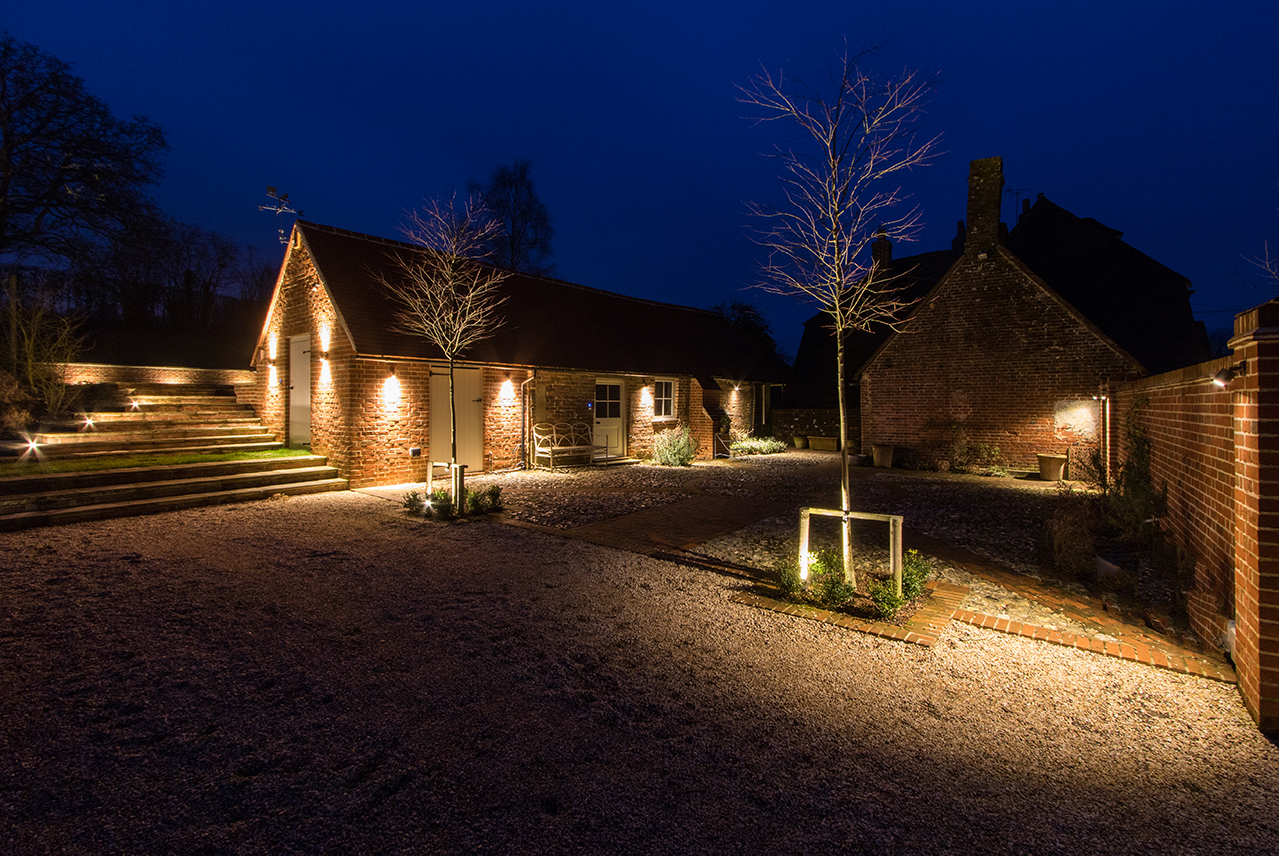Outdoor Lighting
Lighting is often one of the last things to be thought about in a garden restoration. But good lighting adds significant value by extending the time we can spend in the garden in the summer, and showing the beauty of an old house in subtle ways, as well as cheering the way home. Once we consider that most people come home in the dark for around half of the evenings in the year, is worth factoring lighting in early on in the planning process.
Advice
My advice to clients is always to keep lighting low key and not to overdo the number of fittings and the level of brightness. The aim is to gently illuminate the way to and from the arrival point to the doors; to softly light key areas in the garden, and to pick out some of the prettiest places. It is like painting with light, where the brushstrokes themselves can be unobtrusive and barely noticed.
When decided what to light start with the structural elements, which include the entrances, courtyards, drives and paths. The main routes may be lit to show guests the way you want them to go, whilst some others may be able to remain darker or have minimal wayfinding lights for safe passage. Wayfinding is particularly important around steps and slopes where a level change can be hazardous in the dark.
Once you have your wayfinding organised you can plan mood lighting for areas you will use a lot after dark. There is a lovely range of fittings available for different moods with effects like moonlight filters to create soft lighting through trees, so choose your fittings to suit your areas, and avoid one-size-fits-all lighting of every feature.
Motion sensors
PIR motion sensors (passive infra-red detectors) turn lights on as you pass and are useful for seamless walking around a garden and also for security – but make sure they can be overridden so your dining area does not get flood lit by security lamps every time your guests raise a glass. It is also good to set these at a height to prevent them being triggered by smaller animals in the night.
Next layer
The next layer is spotlighting to pick out details for key features like a garden statue or beautiful tree. These layers of lighting can be used independently or together, so plan a variety of circuits for different parts of the garden, and keep the overall voltage low to keep it subtle. Getting light effects right is a specialist subject in itself. Lighting Designer Sally Stephenson of Owl Lighting advises: “Consider lighting hierarchy – use varying beam angles and light power according to the viewing distance and size/scale of the object being lit. Shield the lighting as much as possible to reduce glare, which is more noticeable in exterior lighting, and create soft effects.”
Most outdoor lights are now available as LED fittings which are energy efficient and come in different colours and temperatures. Check the effect of the temperatures before you buy as warm and cool lights have different effects. Cool white light tends to look harsh against old walls, where a warm white is softer, while neutral white works well for planting.
When planning the level of illumination to use, it pays to consider the reflective quality of the surfaces. For example York stone and brick absorb light whilst limestone and ceramic reflect it, so for these two you will need less light and want to position beam angles to avoid glare.
Existing light sources
It is also worth noting any existing light sources such as street lights or shading from large trees and walls as they will impact where you need lights and the overall light levels. Excessive lighting in rural villages and the wider countryside can lead to skyglow which lessens the beauty of the night sky preventing our ability to see the stars.
At a more local level it is kind to wildlife to keep light levels low near trees and to fit lights with a timed PIR to ensure enough hours of darkness for animals like bats and moths and invertebrates whose rhythms and breeding patterns can be adversely affected by artificial light. Some animals and their habitats are protected by law and if the proposed lighting might impact them an assessment will need to be made, taking into account breeding, hibernation and entry and exit points from their homes. As well as the increase in light levels, the effects of installation and maintenance must also be taken into account. Some free standing solar powered lights come fitted with a ‘bat hat’ which reduces the upward spill of light by 98% whilst maintaining a wayfinding profile. These can be a cost effective and useful solution for sensitive areas.
Lighting designer
For all but the simplest schemes it can pay to employ a good lighting designer. They will specify the correct beam angles to maximise impact and to avoid glare and plan correct circuit loads with number of transformers per light fittings required. They will also specify the best fittings for the light load and correct quality for longevity, as well as ensuring that you use the right British standards for outdoors or for ponds for example
If you are using a designer you might gather inspiration from magazines or on line before you meet and make sure you discuss your budget early on to ensure you get the best impact with the correct number of fixings. They should also be able to provide you with a plan showing the overall light levels and the effects to be achieved in each area so you can be sure of the impact before you order fittings.
Planning
Plan to install lighting at the same time as you have any trenching done for gas electricity or drainage, or at least get ducting in to where you might need lighting and electricity points, to minimise upheaval and allow flexibility later.
There are some beautiful light fittings to choose from in keeping with various periods of property, and the key is to ensure that they are easy to install and maintain, and respectful of the historic fabric. If they are to be decorative items in themselves and fixed to the exterior walls, check whether you need listed buildings consent in case they may alter the character of the building.
Light itself, and minor domestic light fittings, are not subject to planning controls. However, if you are planning to install external lighting for security or other purposes, you should ensure that the intensity and direction of light does create a ‘nuisance’ for neighbours.
This article first appeared in the Listed Heritage Magazine, September 2019



